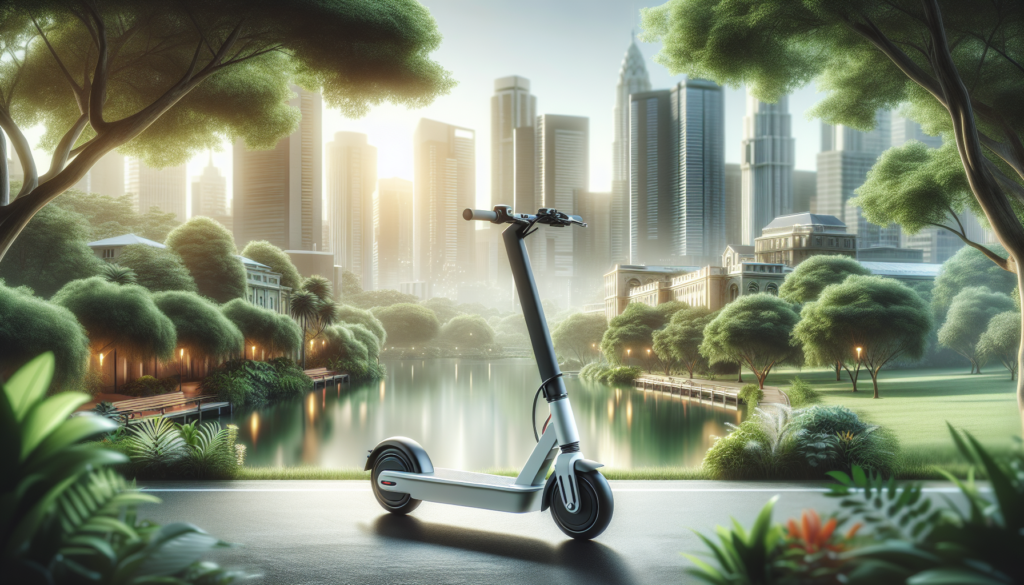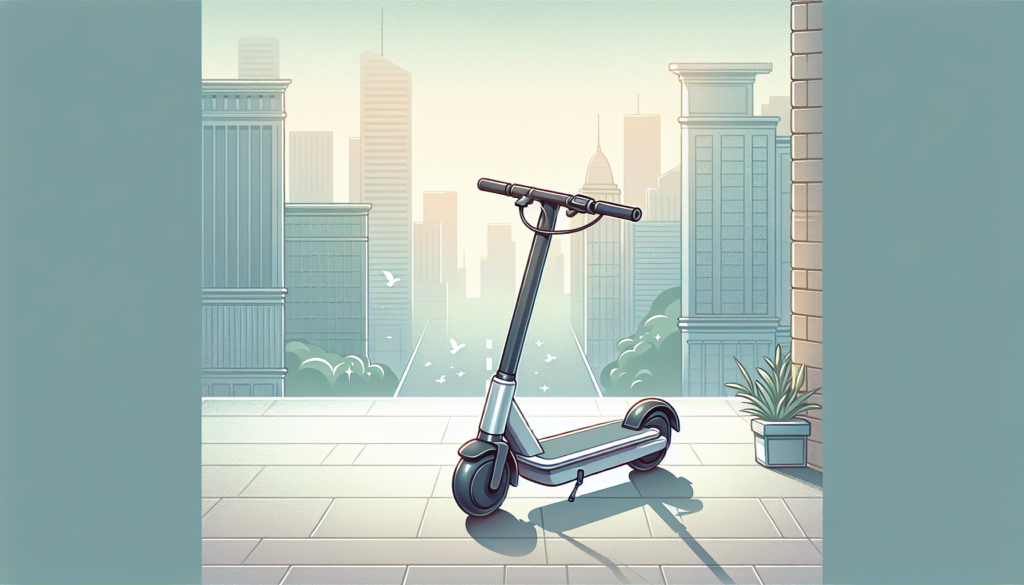
In the world of electric scooters, the Segway Ninebot Max has established itself as a strong contender thanks to its impressive specifications and features. However, as the market evolves, competitors emerge to challenge its reign. One such competitor is the HX X9 from EKO Life MY, a scooter that balances performance and affordability while boasting its own remarkable attributes. In this blog, we will delve into a comprehensive analysis of the Segway Ninebot Max’s competitor, the HX X9, comparing their specifications, performance, and value to help you make an informed decision on your next electric scooter purchase.
Overview of Segway Ninebot Max Features
The Segway Ninebot Max is designed to deliver an impressive riding experience, making it a standout option in the electric scooter market. Equipped with a robust 36V 15.3AH battery, the Ninebot Max boasts a remarkable range of 60 to 70 kilometers, allowing for longer commutes without the need for constant recharging. Weighing 25 kg, its sturdy build contributes to stability and durability, ensuring a reliable ride on various terrains. The scooter can handle a maximum climbing angle of 15 degrees, making it suitable for urban landscapes with gentle inclines. With a standing deck measuring 7cm x 65cm, riders can expect a comfortable stance during their journey.
Additionally, the combination of electronic and drum brakes provides a dual assurance of safety while navigating through busy streets. In contrast, the HX X9 presents itself as a formidable competitor, offering similar functionalities but with a few distinct advantages. The HX X9 is powered by a slightly more potent 36V 15.6AH battery, allowing it a comparable range of 60 to 70 kilometers while weighing just 19 kg, which enhances its portability. It shines in climbing ability, capable of tackling inclines of up to 25 degrees, making it more adept at handling hilly terrains.
Furthermore, the larger standing deck of 17.5cm x 65cm allows for greater comfort, while the enhanced braking system featuring eABS and disc brakes provides superior stopping power. At a price of RM 2,788, the HX X9 emerges as a compelling alternative for those seeking performance and affordability without compromising on quality.
Introduction to HX X9 and Its Specifications
The HX X9 has emerged as a formidable competitor to the Segway Ninebot Max, offering impressive specifications that cater to a variety of riders. Featuring a robust 36V 15.6AH (562 WH) battery, the HX X9 provides a significant range of 60-70 kilometers, competing directly with the Max. Weighing in at just 19kg, this scooter is not only lightweight but also boasts an exceptional climbing ability of 25 degrees, making it particularly suited for urban terrains and inclines.
Additionally, the HX X9‘s standing deck measures 17.5cm x 65cm, providing ample space for riders to maintain comfort and stability during their rides. With a price tag of RM 2,788, it presents an attractive option for those looking for high performance without breaking the bank.
The braking system on the HX X9 employs advanced eABS and disc brakes, ensuring enhanced safety and responsiveness compared to the conventional electronic and drum brakes found on the Segway Ninebot Max. This feature can be particularly appealing to riders who prioritize safety in their commuting choices. The premium specifications of the HX X9, coupled with its competitive pricing, position it as a strong alternative to the Segway Ninebot Max, making it worth considering for those in the market for a high-quality electric scooter.
Comparative Analysis of Battery Performance
When comparing the battery performance of the Segway Ninebot Max and the HX X9, it is clear that both electric scooters are designed for efficiency and longevity. The Segway Ninebot Max is equipped with a 36V 15.3AH (551 WH) battery, which provides a commendable range of 60-70KM. This robust battery is designed to support a weight of 25 kg while offering a climbing ability of up to 15 degrees. While its battery capacity is slightly less than that of its competitor, the Ninebot Max still ensures impressive performance in urban settings, making it a reliable choice for city commuters who need a dependable scooter for daily use.
On the other hand, the HX X9 boasts a slightly more powerful battery, rated at 36V 15.6AH (562 WH), which also offers a range of 60-70KM but excels in climbing ability with a 25-degree gradient. With a lighter weight of 19 kg, the HX X9 is easier to maneuver and carry, particularly beneficial for users who might need to lift or transport their scooter often. Overall, while both models promise similar distances, the HX X9 edges ahead in climbing capability and weight, making it an appealing contender for those seeking enhanced battery performance and an agile riding experience.
Range Capabilities: Segway Ninebot Max vs. HX X9
When comparing the range capabilities of the Segway Ninebot Max and the HX X9, both models showcase impressive performance, yet they appeal to slightly different user needs. The Segway Ninebot Max boasts a range of 60-70 kilometers powered by its robust 36V 15.3Ah battery, which allows for extended rides without the immediate need for a recharge. This makes it ideal for those who may be commuting longer distances or seeking leisurely rides around town. Although its weight of 25kg is a consideration, the stability and comfort it offers while tackling medium terrain heightens its appeal among urban riders.
On the other hand, the HX X9 also offers a competitive range of 60-70 kilometers but does so with a slightly more robust 36V 15.6Ah battery, which translates to a marginal increase in battery efficiency. Weighing in at only 19kg, the HX X9 is lighter, enhancing portability and making it a more convenient choice for users who need to carry their scooter or navigate crowded areas. Additionally, its 25-degree climbing ability suggests it can handle inclines better than the Segway, attracting users who might often traverse hilly terrains in their daily journeys.
Weight Considerations: Which Scooter Is More Portable?

When it comes to portability, weight is a crucial factor that can influence your choice between the Segway Ninebot Max and its competitor, the HX X9. The Segway Ninebot Max weighs 25kg, which may pose a challenge for users who need to carry it over long distances or navigate stairs. This scooter, while robust and offering a solid build quality, is significantly heavier compared to the HX X9.
On the other hand, the HX X9 is designed to be lightweight at just 19kg, making it an ideal choice for commuters or those who frequently need to transport their scooter. This weight advantage allows for easier maneuverability and reduced fatigue when carrying the scooter in various situations, such as public transport or when storing it in tight spaces.
With the HX X9 being 6kg lighter, it caters to a different audience that values convenience and ease of transport. This difference in weight can be significant for everyday use, making the HX X9 more appealing for those who are aware of their portability needs. Whether you’re commuting to work or simply running errands, choosing a scooter that maximizes convenience will amplify your overall experience. Therefore, when making a comparison focusing on weight considerations, the HX X9‘s design offers a distinct advantage for those prioritizing portability over features that the heavier Segway Ninebot Max provides.
Climbing Ability: Performance on Inclines
When it comes to climbing ability, the HX X9 outshines the Segway Ninebot Max with a remarkable performance on inclines. The HX X9 boasts a climbing capability of up to 25 degrees, making it an excellent choice for navigating hilly terrains and steep slopes. This feature is particularly advantageous for riders who frequently travel through urban areas with varied elevations, as it allows for more confidence and ease when tackling challenging hills. Its robust design supports this climbing prowess while maintaining a lightweight structure at just 19kg, which is an impressive feat when compared to the Segway Ninebot Max, which has a climbing ability of only 15 degrees and weighs 25kg.
The combination of a high climbing angle and reduced weight enhances maneuverability and rider experience, especially in demanding riding conditions. In contrast, while the Segway Ninebot Max has its merits, its limitations in climbing ability might deter potential riders who require a vehicle that can handle more rugged routes. Its heavier build could also impact performance negatively when faced with considerable inclines. Overall, the HX X9‘s superior climbing capability makes it a standout candidate for those prioritizing performance on inclines, indicating that it can easily outperform Segway‘s offering in challenging environments.
Price Comparison and Value for Money
When it comes to the price comparison between the Segway Ninebot Max and its competitor, the HX X9, there is a noticeable distinction in their pricing structures. The Segway Ninebot Max is priced at RM 3,388, aligning with its robust features and performance. On the other hand, the HX X9 presents a more budget-friendly option at RM 2,788. While the price difference of RM 600 may seem significant, potential buyers must weigh the value for money that each model provides, considering features such as weight, climbing ability, and overall functionality. The Segway Ninebot Max boasts a weight of 25kg and a climbing ability of 15 degrees, making it suitable for a range of terrains.
In contrast, the HX X9 is lighter at 19kg while offering a superior climbing ability of 25 degrees, making it more adept at tackling steeper slopes. Both scooters have similar battery capacities and range, ensuring that users can travel 60-70KM on a single charge. When assessing the price and features, the HX X9 may present a more compelling case for value given its performance capabilities and lower price point. Ultimately, the decision will depend on individual preferences and the specific riding conditions experienced by the user.
Braking Systems: Safety Features of Each Model
When comparing the braking systems of the Segway Ninebot Max and the HX X9, safety features play a crucial role in evaluating their performance. The Segway Ninebot Max is equipped with an electronic brake system paired with a drum brake, providing a robust mechanism to ensure controlled stopping and optimal stability. This dual braking system not only enhances safety during rides but also ensures reliability on various terrains, particularly for those who might be new to electric scooters. With its weight of 25kg, the Ninebot Max’s braking performance is designed to manage its mass effectively, making it a secure choice for riders.
On the other hand, the HX X9 utilizes a combination of electronic Anti-lock Braking System (eABS) and a disc brake. This sophisticated braking system is particularly effective for quick stops, contributing to the scooter’s agile handling capabilities, especially given its lighter weight of 19kg. The 25-degree climbing ability of the HX X9 adds to its attractive safety profile, ensuring that the brakes perform admirably even on steeper inclines. With each model demonstrating unique safety features through their braking systems, riders can choose the one that best suits their needs and riding conditions.
Final Thoughts on Segway Ninebot Max vs HX X9

In conclusion, when comparing the Segway Ninebot Max and the HX X9, it is clear that both scooters excel in their own unique ways. The Segway Ninebot Max offers a robust build with a weight of 25kg and a solid climbing ability of 15 degrees, appealing to those who prioritize endurance and stability on longer rides. Its impressive 60-70KM range and electronic and drum braking system add to its reliability, making it a great option for users who might expect varied terrain. However, this comes at a higher price of RM 3,388, which might be a consideration for budget-conscious consumers.
On the other hand, the HX X9 stands out with a more lightweight design at 19kg and superior climbing ability of 25 degrees, making it an ideal choice for urban commuting and maneuvering up steeper inclines. Its slightly higher battery capacity of 36V 15.6AH allows for a comparable range of 60-70KM, all while being more affordable at RM 2,788. Additionally, its enhanced braking system with eABS and disc brakes ensures safety and control, which is crucial for riders in busy environments. Ultimately, the choice between these two scooters boils down to individual preferences and needs—whether you need a sturdier build for longer rides or a lighter option for quick commutes.

I like how the blog highlights the importance of lifestyle changes for a healthier life. The examples given are easy to follow and understand.
Thank you so much, Emely! We’re glad you found the lifestyle changes highlighted in the blog to be easy to follow and understand. Our focus at Eko Life Malaysia is to empower individuals to live a healthier life through the use of environmentally friendly transportation methods, such as bicycles, e-bikes, and e-scooters. If you have any questions or need further guidance, please don’t hesitate to reach out to us at [email protected] or call us at +60 3-7890 3042.
The blog is quite informative and helpful. However, it’s best to include more advanced diet plans for those who need more guidance.
Thank you so much for your kind words about our blog! We appreciate your suggestion to include advanced diet plans for those in need. We’ll definitely take this into consideration for our future content. If you have any more feedback or questions, feel free to reach out to us at [email protected] or +60 3-7890 3042. Thank you for helping us improve!.
I agree that regular exercises should be a part of our daily routine. But, maybe the blog can add more tips on time management to balance work and exercise.
Thank you for your thoughtful comment, Lester. We at Eko Life Malaysia agree that balancing work and exercise is crucial to maintaining a healthy lifestyle. In fact, we plan to create a series of blog posts focusing on time management and balance, including a ‘5-a-day’ fitness routine that can be incorporated into your daily schedule. We’ll also share some of our expert advice on how to maximize your commute by cycling or ebiking! If you’d like to stay updated on our upcoming content, please reach out to us at [email protected] or call +60 3-7890 3042. We’d love to keep you informed!